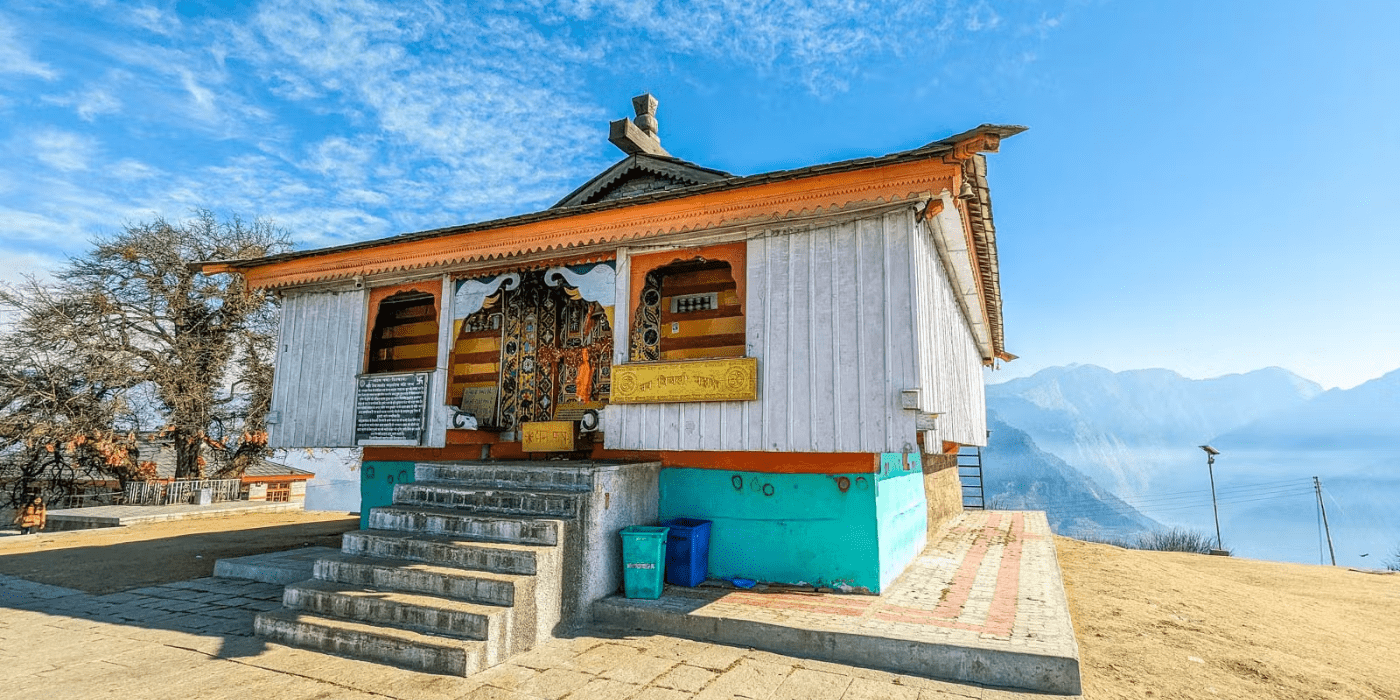High up in the Kullu Valley of Himachal Pradesh, surrounded by towering deodar trees and snow-clad Himalayan peaks, lies the Bijli Mahadev Temple, a place where nature and divinity meet in the most dramatic way possible. This isn’t just a temple, it’s an experience that stays with you long after you return to the valley below.
The temple is dedicated to Lord Shiva and carries with it a legend unlike any other. Every year, lightning strikes the Shiva lingam inside the sanctum, shattering it into pieces, only for it to be restored by the priests with butter and sattoo (roasted flour). This extraordinary ritual is what gives the temple its name. Bijli means lightning and Mahadev is Lord Shiva. Together, the name reflects the powerful union of natural energy and divine presence.
Let’s take a journey through its myths, history, trekking trails, and the spiritual aura that makes Bijli Mahadev Temple one of the most unique shrines in India.
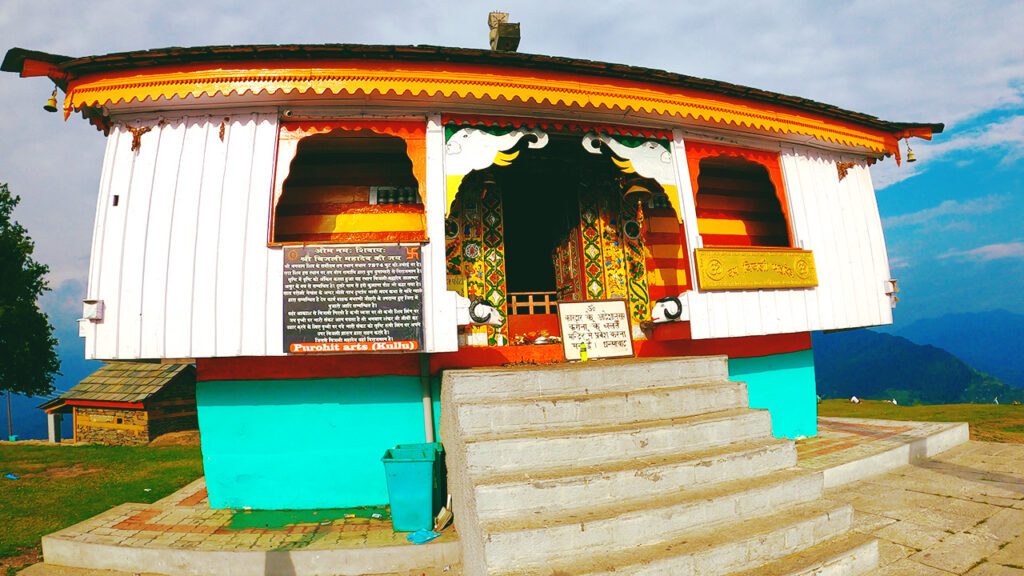
The Legend of Lightning and Shiva
Local stories say that the temple’s connection with lightning is no accident. Lord Shiva, as Mahadev, is the destroyer and regenerator of the universe, and lightning is believed to be his way of cleansing the world of evil forces.
Every few years, the Shiv lingam inside the temple is struck by lightning during fierce storms. When this happens, the lingam shatters into pieces, symbolizing destruction. The temple priests then painstakingly piece it back together using a paste made of butter and sattoo, representing renewal and continuity.
This cycle of destruction and rebirth is a living reminder of Shiva’s cosmic dance and the eternal rhythms of creation. For devotees, witnessing this phenomenon is a sign of divine power, proof that the temple is not just stone and wood, but a living entity connected directly to nature.
The Setting – A Temple in the Clouds
Reaching Bijli Mahadev Temple feels like walking into another world. Perched at an altitude of around 2,460 meters, the temple overlooks the confluence of the Beas and Parvati rivers. From the top, the views stretch across the Kullu and Parvati valleys, offering one of the most breathtaking panoramas in Himachal.
The temple itself is modest in architecture, built in the traditional Himachali style with a sloping roof of wood and stone. But its simplicity only enhances its beauty. The real magic lies in the atmosphere—the crisp mountain air, the silence broken only by rustling pines, and the feeling that the sky is just within reach.
When clouds gather, it almost feels as if the heavens are descending on the shrine, preparing for the dramatic dance of lightning that has defined the temple for centuries.

Trekking to Bijli Mahadev
For those who love walking in the lap of the Himalayas, the trek to Bijli Mahadev Temple is an unforgettable experience. It is not too long or overly strenuous, making it accessible even for beginners, yet it carries the essence of a true mountain journey—forests, wide meadows, panoramic views, and a sense of accomplishment when you finally stand before the temple.
Let me take you through what the trek feels like, step by step, with tips and observations that might help you plan better.
The Starting Point – Chansari Village
Most treks to Bijli Mahadev begin at Chansari, a small village about 14 kilometers from Kullu town. The road trip to this point itself sets the mood. As your vehicle winds through apple orchards, terraced fields, and tiny hamlets, you feel the valley narrowing and the mountains rising higher.
Chansari has a few small tea stalls and dhabas where you can grab a cup of chai or a quick snack before setting out. It is also a good place to chat with locals, many of whom will happily share their own stories of visiting the temple.
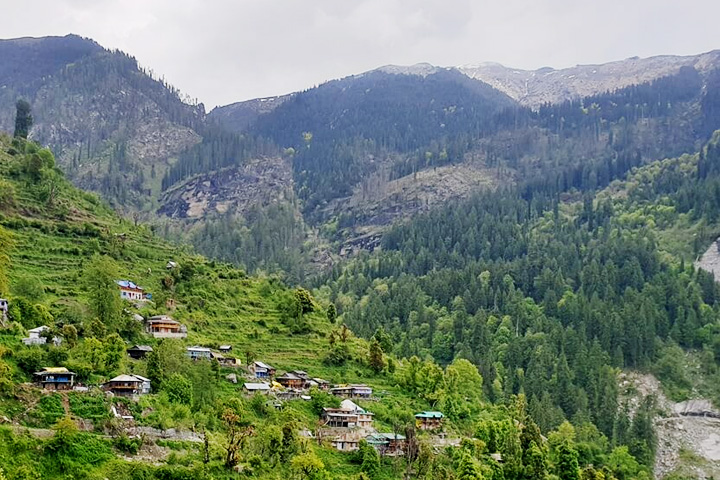
The First Stretch – Into the Forest
The trek begins with a stone-paved path that quickly enters a dense forest of deodar and pine. The smell of pine needles, damp earth, and occasional bursts of wildflowers immediately refreshes the senses. The air feels cooler here, and the sounds of the valley—honking cars or chatter—fade into silence broken only by bird calls and rustling leaves.
This first stretch is a little steep, and you might find yourself catching your breath if you aren’t used to trekking. But the shade of the forest makes it manageable, and benches placed along the way provide rest spots.
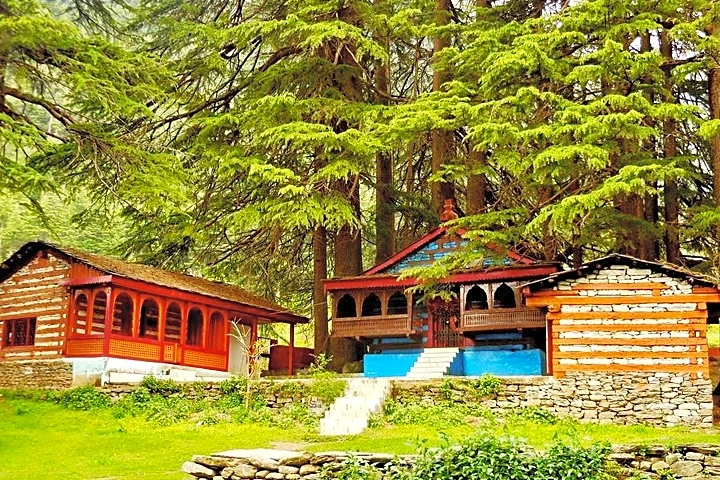
The Middle Section – Meadows and Clearings
As you climb higher, the trees give way to wide meadows that open up views of the Kullu Valley below. If you trek in spring or early summer, the meadows are dotted with wildflowers, and shepherds may be seen grazing their flocks. These are the moments that remind you why Himalayan treks feel so magical—nature looks raw and untouched.
The path here levels out a bit, offering a gentle respite from the initial climb. It’s a great spot to sit down, sip water, and take in the vastness of the valley spread below.
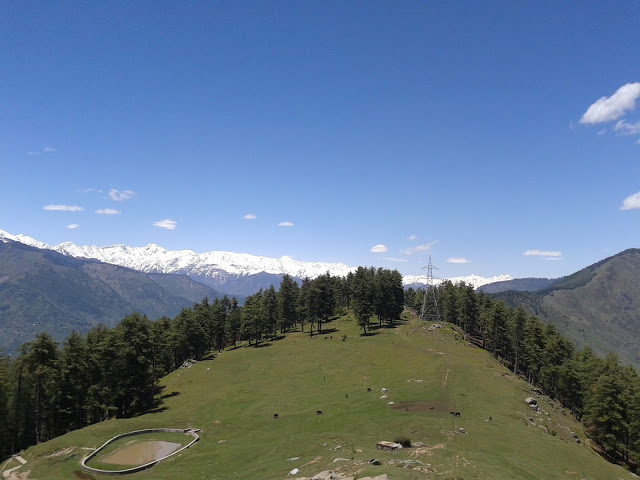
The Final Ascent – Steps to the Temple
The last part of the trek involves a long flight of stone steps that lead straight up to the temple. This section is perhaps the toughest, as the steps are steep and seem never-ending, but the sight of the temple peeking above motivates you to push on.
Pilgrims often chant Shiva’s name as they climb, creating an atmosphere that feels more like a spiritual ascent than just a physical effort. Some carry small offerings of flowers or incense, and even seeing their dedication gives you a fresh burst of energy.
The Reward – Reaching the Temple
When you finally reach the top, you are greeted by the small but powerful Bijli Mahadev Temple. The wooden structure stands on a grassy clearing, with prayer flags fluttering and a towering trident pointing to the sky.
From here, the 360-degree views are jaw-dropping. On clear days, you can see snow-covered peaks in the distance, the Beas River winding through the valley, and villages dotting the slopes. Many trekkers find themselves simply sitting in silence, letting the view sink in.

Seasonal Experiences on the Trek
One of the beautiful things about this trek is how it changes with the seasons:
Winter (November–February): Heavy snowfall blankets the trail, making the trek challenging but also breathtaking. The temple under snow looks surreal, though it’s only for experienced trekkers.
Spring (March–April): The forests come alive with blossoms, and meadows are sprinkled with flowers. This is one of the most pleasant times for the trek.
Summer (May–June): The trail is green and lively, with cool breezes at the top. Days are long, giving you plenty of time to trek at a relaxed pace.
Monsoon (July–August): Trekking is risky as the path becomes slippery, and leeches are common in the forest. It’s best to avoid this season.
Autumn (September–October): Clear skies and crisp air make for stunning views. The forests look golden as leaves change color.
A Spiritual Experience
Stepping into the courtyard of Bijli Mahadev Temple, most visitors describe an immediate sense of calm. The air feels charged yet peaceful, as if infused with the very energy of the storms that strike here.
Inside the sanctum, the Shiva lingam stands as the focal point of worship. Though simple in appearance, it carries the weight of centuries of devotion and the awe-inspiring legend of lightning strikes.
Pilgrims light lamps, offer flowers, and bow before the lingam, but what stays with them is not just the ritual—it is the awareness that they are standing in a place where gods and nature converse directly.
Festivals and Fairs
The temple comes alive during Maha Shivaratri, when thousands of devotees trek up to pay homage to Lord Shiva. The air fills with chants, drums, and the fragrance of incense. Local fairs are organized with folk music, dance, and stalls offering regional delicacies.
During these times, the temple is not just a place of worship but also a vibrant cultural hub where the community gathers, stories are exchanged, and traditions are kept alive.
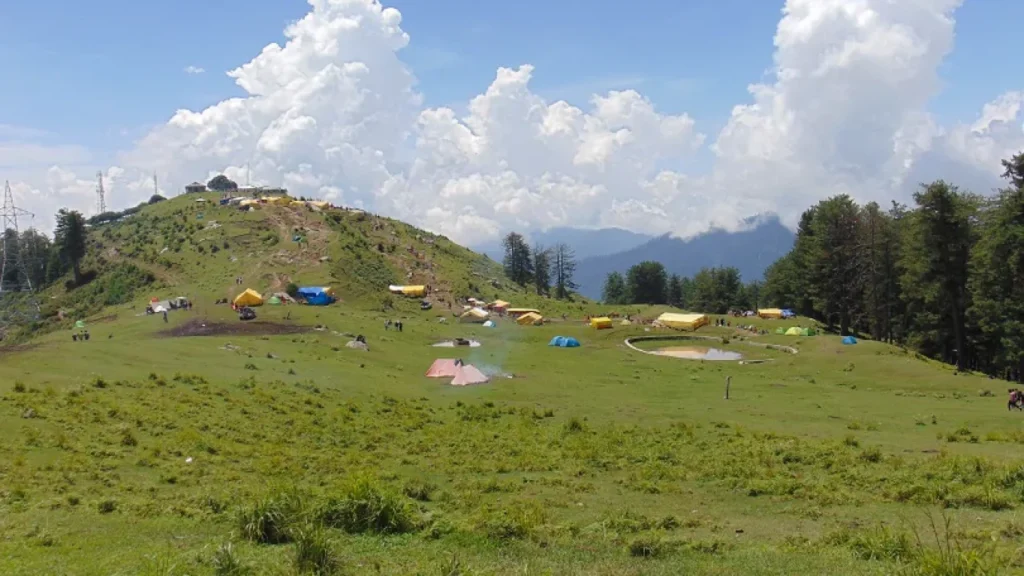
The Science Behind the Legend
While devotees see the lightning strikes as divine, scientists have also studied the phenomenon. The temple’s high altitude and its position on a ridge make it particularly prone to lightning activity. The wooden structure, coupled with the metallic trident (trishul) that rises skyward, acts as a natural conductor, drawing lightning toward it.
For believers, science only reinforces the miracle. They see it as proof that Shiva chose this site intentionally, making the temple a meeting point of spirituality and natural energy.
Nearby Attractions
The beauty of traveling to Bijli Mahadev Temple is that the journey never feels like a single destination trip. The Kullu Valley surrounding the temple is dotted with vibrant villages, hidden trails, and cultural gems that enrich your experience. If you plan wisely, your visit to Bijli Mahadev can easily turn into a well-rounded Himalayan adventure.
Here are some of the best nearby attractions and experiences you can combine with your temple visit.
1. Kullu Town – The Cultural Heartbeat
Only about 14 kilometers away, Kullu town makes for a natural stop either before or after the temple trek. While it is known as the gateway to the valley, there is much more to it than just being a base point.
- What to see: The Raghunath Temple, dedicated to Lord Rama, is one of the most important religious sites in Kullu. It’s especially vibrant during the Dussehra festival when deities from surrounding villages gather here.
- Local flavor: Wander through the markets filled with woolen shawls, caps, and handcrafted souvenirs. The lively energy of the bazaar contrasts beautifully with the silence of Bijli Mahadev.
- Why it matters: Visiting Kullu gives you insight into the culture and traditions of the valley, balancing the spiritual high of the temple with local life.
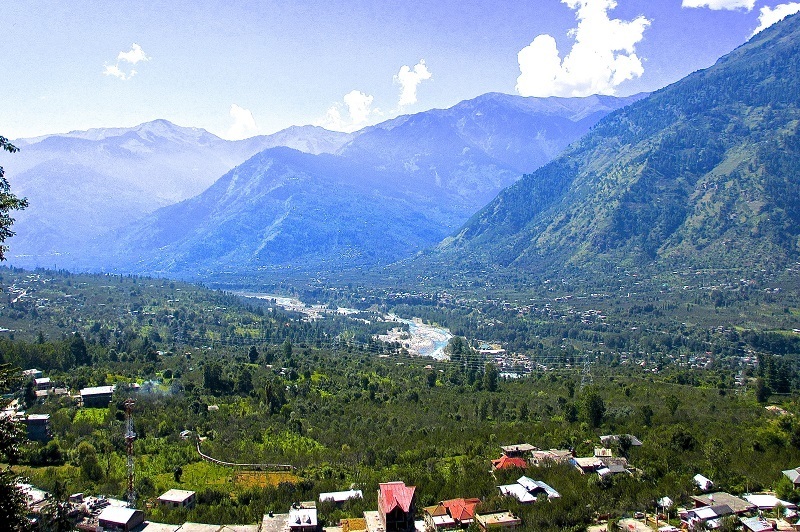
2. Naggar – Art and Heritage
Around 25 kilometers from Kullu, Naggar is one of the most charming spots in the valley. Once the capital of the Kullu kingdom, it is a blend of history, culture, and scenic beauty.
- Highlights: The Naggar Castle, a traditional wood-and-stone building, now functions as a heritage hotel. Even if you’re not staying, you can walk through its courtyards and balconies to enjoy sweeping views of the Beas River.
- Art lover’s delight: The Nicholas Roerich Art Gallery is a gem here. The Russian painter made Naggar his home, and the gallery displays his works along with family memorabilia.
- Experience: Naggar feels like stepping back in time. It’s less crowded than Manali, yet offers plenty of charm with its orchards, trails, and old temples.
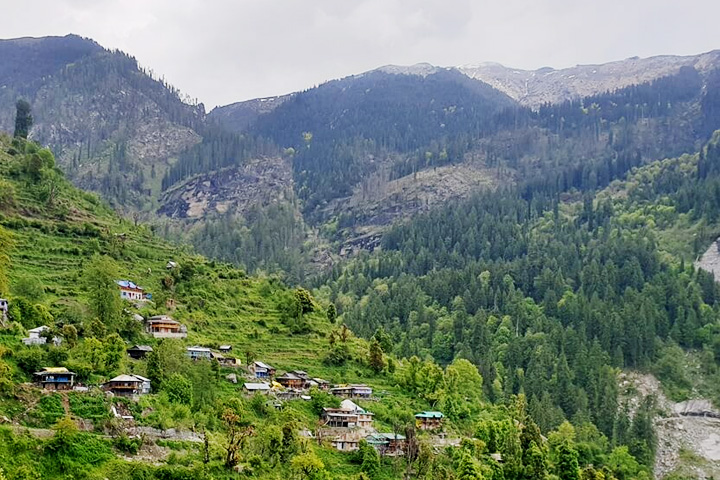
3. Manali – Adventure and Modern Comfort
If you’re already in the Kullu Valley, chances are you’ll head to Manali, about 40 kilometers from Bijli Mahadev. While it’s more commercial than other nearby spots, it offers a different dimension to your trip.
- Adventure options: From paragliding in Solang Valley to rafting in the Beas River, Manali is for adrenaline seekers.
- Spiritual spaces: Don’t miss the Hidimba Devi Temple, surrounded by deodar forests. The atmosphere is serene despite the crowds.
- Local life: Old Manali is a favorite for travelers who enjoy café culture, live music, and boutique stays.
After the calm of Bijli Mahadev, Manali’s buzz feels like a refreshing contrast if you enjoy mixing quiet retreats with lively hangouts.
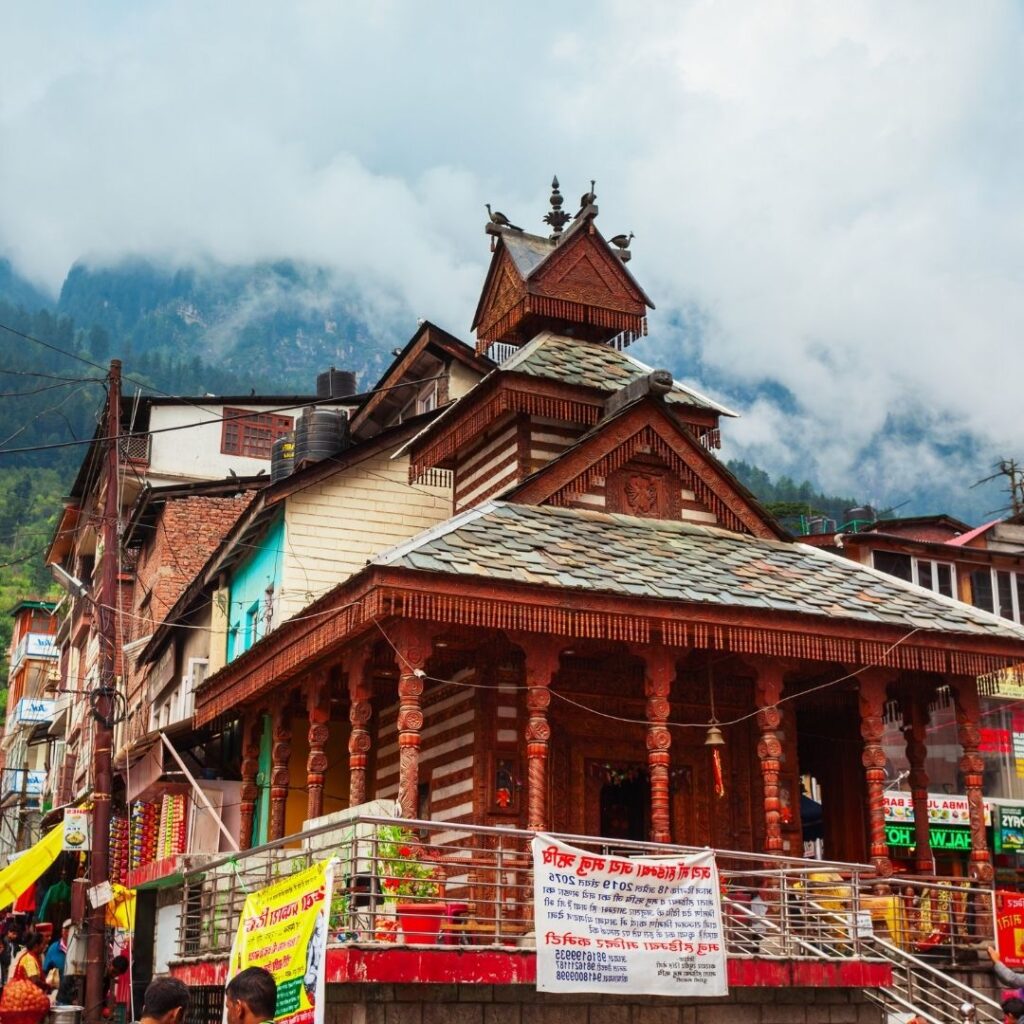
4. Kasol and Parvati Valley – A Riverside Escape
Though not directly connected, many travelers combine Bijli Mahadev with a detour into Parvati Valley. Just a couple of hours from Kullu, Kasol has become a hotspot for backpackers.
- Why visit: The riverside setting, quirky cafés, and fusion of cultures give it a laid-back vibe.
- Nearby experiences: From Kasol, you can hike to Chalal or even plan longer treks to Tosh and Kheerganga.
- Best part: It adds a touch of adventure and bohemian charm to your temple-focused trip.
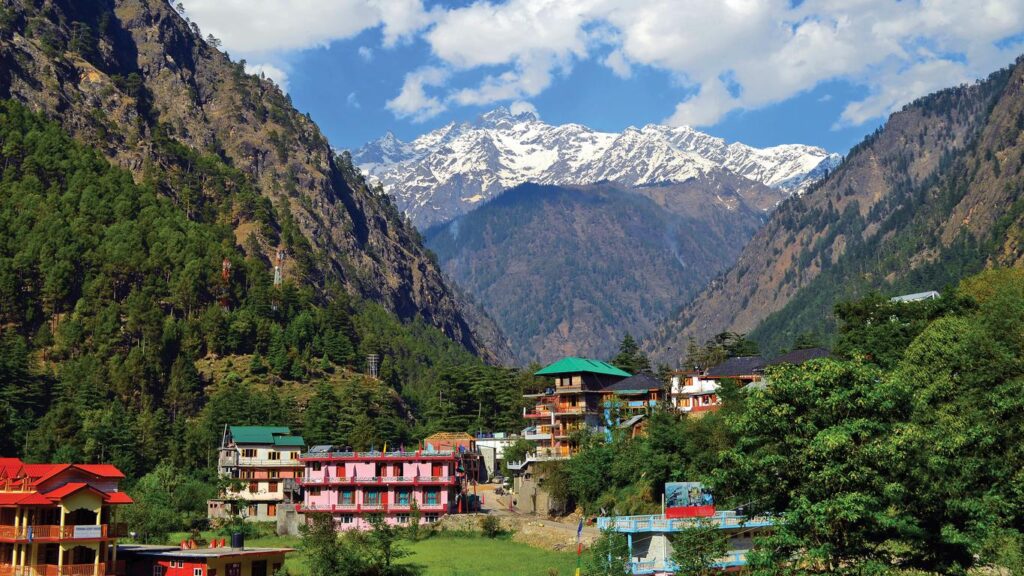
5. Jana Waterfall – A Hidden Natural Gem
On the road between Naggar and Manali, you’ll find the lovely Jana Waterfall. Though not massive, it’s one of those places that makes you stop and breathe deeply.
- The setting: Surrounded by apple orchards and pine trees, the waterfall feels like a pocket of tranquility.
- Food experience: Small local stalls near the waterfall serve traditional Himachali dishes like siddu, rajma, and makki ki roti. Eating hot food here with the sound of rushing water is a memory in itself.
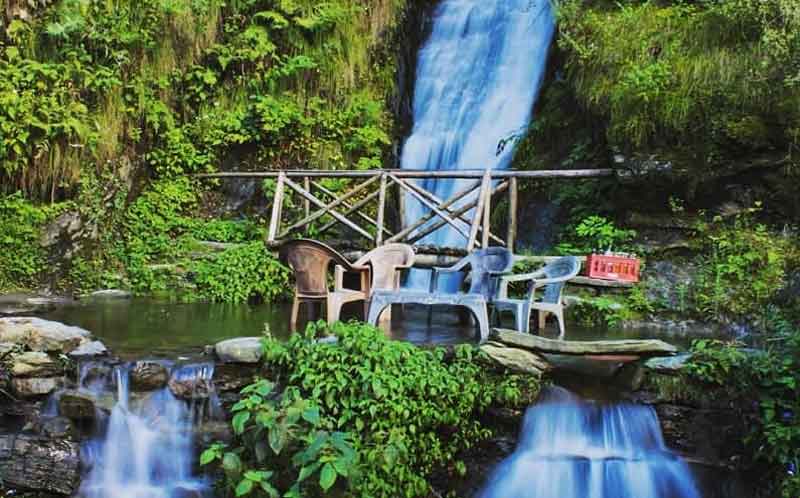
6. Tirthan Valley – Nature’s Untouched Corner
A bit off the main tourist trail, Tirthan Valley lies about 50 kilometers from Kullu. If you’re looking for peace and nature after your Bijli Mahadev journey, this valley is a dream.
- Activities: It’s part of the Great Himalayan National Park, a UNESCO World Heritage Site. Trekking, birdwatching, and trout fishing are popular here.
- Why it stands out: Unlike Manali or Kasol, Tirthan still feels raw and less commercialized. The villages here offer authentic homestays where you can live at nature’s pace.

7. Bijli Mahadev Meadows – Stay Longer at the Top
While most people trek up to the temple and return the same day, you can actually camp overnight in the meadows near the temple.
- Why stay: Watching the sunset over the snow peaks and waking up to a golden sunrise is a magical experience that most day-trippers miss.
- Practical tip: Carry your own camping gear or check with local operators in Kullu who arrange guided camping trips.
This allows you to fully immerse yourself in the spiritual and natural energy of the temple surroundings.
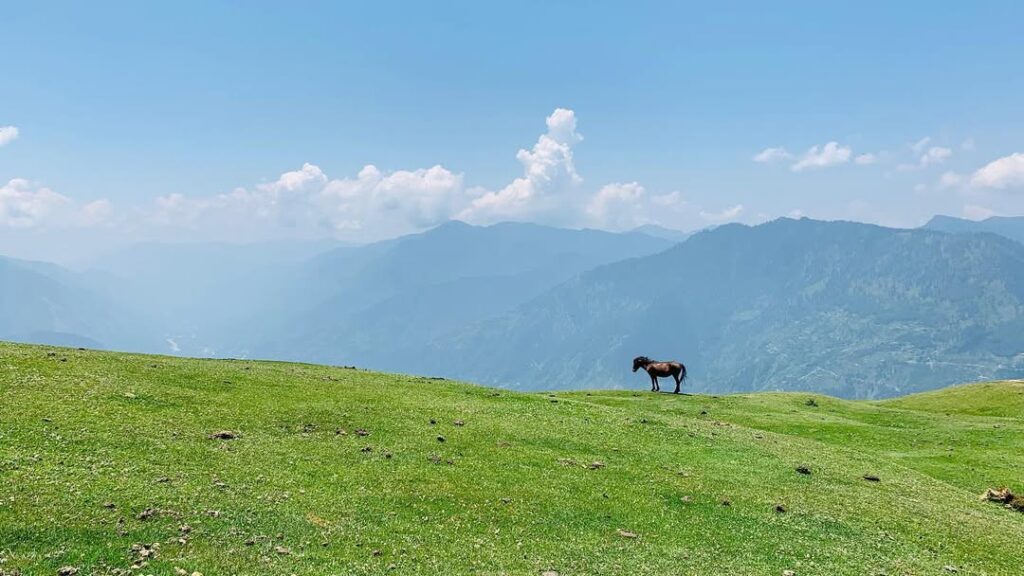
Stories from Locals
One of the most enriching parts of visiting Bijli Mahadev is listening to the locals. Elderly villagers often recall tales of storms when the temple shook under the fury of lightning, yet stood tall afterward. Some speak of miraculous healings, while others recount personal experiences of finding peace and guidance after visiting the shrine.
These oral traditions give the temple a living history, one that isn’t written in books but carried in the hearts of the people who live in its shadow.
Practical Travel Tips
- Best Time to Visit: March to September is ideal. During winter, heavy snow makes the trek difficult, though the snow-covered temple has its own mystical charm.
- Trekking Essentials: Carry water, snacks, and a walking stick if needed. Good shoes are a must as the trail can be steep in places.
- Clothing: Weather in the mountains changes quickly, so layer up and keep a light jacket even in summer.
- Respect the Place: Remember that this is not just a tourist spot but a sacred temple. Dress modestly and maintain silence in the sanctum.
- Stay Options: Kullu and Manali have plenty of hotels and homestays ranging from budget to luxury. For those seeking an immersive experience, homestays in nearby villages offer authentic Himachali hospitality.
Why You Should Visit
Bijli Mahadev Temple is not just about religion. It is about standing at a spot where earth and sky meet in the most electrifying way possible. It is about realizing that spirituality can be raw, elemental, and deeply tied to the forces of nature.
Whether you are a devotee of Shiva, a lover of mythology, a trekking enthusiast, or simply a traveler looking for stories that stay with you, Bijli Mahadev offers something unique. It reminds you that faith is not always about grand temples or rituals—it can also be about lightning splitting the sky, about butter mending stone, and about humans learning to live with both destruction and renewal.
FAQs
Q1. Where is Bijli Mahadev Temple located?
It is situated in the Kullu Valley of Himachal Pradesh, about 22 km from Kullu town.
Q2. Why is it called Bijli Mahadev?
The temple is named so because lightning strikes the Shiva Linga here, symbolizing Lord Shiva’s cosmic energy.
Q3. What is the legend of the Shiva Linga here?
Each time lightning strikes, the Shiva Linga breaks and is restored by priests using butter and sattoo paste.
Q4. Which deity is worshipped at the temple?
The temple is dedicated to Lord Shiva, revered as Bijli Mahadev.
Q5. How can one reach the temple?
Visitors trek around 3 km uphill from Chansari village after reaching by road from Kullu.
Q6. What is the altitude of the temple?
The temple stands at about 2,460 meters (8,100 feet), offering panoramic Himalayan views.
Q7. What is the best time to visit Bijli Mahadev Temple?
March to September is ideal for trekking and temple visits. Winters can be harsh with snowfall.
Q8. Are there any festivals celebrated here?
Shivaratri and Shravan month draw many devotees with special rituals and celebrations.
Q9. Is the trek to the temple difficult?
The trek is moderately difficult, but the scenic beauty makes it worthwhile for pilgrims and trekkers.
Q10. Is there any entry fee?
No, entry to the temple is free for all devotees and visitors.

